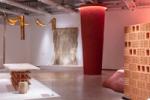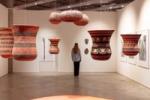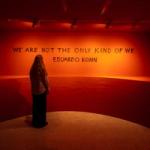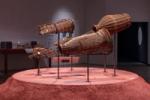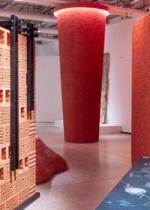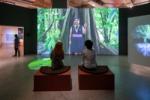More than Human, 2025
Location London
Client Design Museum
Curator Justin McGuirk, Rebecca Lewin
Collaborators Kellenberger-White - graphic design, setWorks - build
More than Human, 2025
Location London
Client Design Museum
Curator Justin McGuirk, Rebecca Lewin
Collaborators Kellenberger-White - graphic design, setWorks - build
Msoma Architects have designed the More-than-Human exhibition at the Design Museum, a landmark showcase exploring the evolving relationship between humans, non-human species, and the environment through design. Our involvement centred on the conceptualisation and design of the exhibition space, drawing deeply on themes inspired by Donna Haraway’s Chthulucene and the intelligence of animal and indigenous architectures.
Our design sought to embody the tension between the ‘more-than-human’ world and the modern, human-centric vision of the built environment. This duality was represented through the contrast of organic, textured surfaces alongside the clean, white walls reminiscent of contemporary art galleries — symbolising the modernist ideals that often separate humanity from nature.
Sustainability and material consciousness were fundamental to our approach. We prioritised reducing waste and lowering the carbon footprint of the exhibition by reusing up to 70% of the existing structures from the previous exhibition in Gallery 1, including walls, plinths, and vitrines. New design elements were crafted from biodegradable materials, featuring natural clay plaster in both smooth and rough finishes. Throughout the exhibition, we applied Edward Bulmer’s natural paints, reinforcing our commitment to environmentally responsible practices.
In addition to sustainability, the design was developed with modularity in mind, allowing for components to be easily dismantled and reused for touring after the exhibition closes -further extending their lifespan and reducing environmental impact.
Msoma Architects embraces the interconnectedness of decarbonisation and decolonisation. Clay, a material traditionally associated with vernacular and indigenous architectures and often undervalued in contemporary design discourse, was deliberately chosen to challenge these perceptions. By elevating clay in this context, we aimed to destigmatise its use and highlight its potential within sustainable, contemporary architecture — acknowledging and honouring its historical and cultural significance.
Through this design, Msoma Architects invites visitors to reconsider their relationship with the natural world, recognising a more inclusive, interconnected future where human and non-human worlds coexist and thrive together.
Photos by Luke Hayes.
